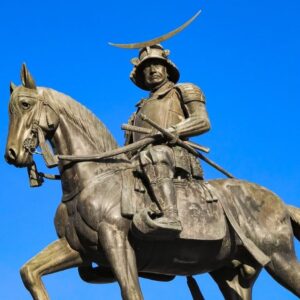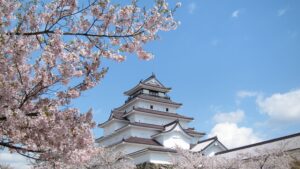Kiyomizu-dera Temple, Kannon Brought Victory to a Noble Warrior, Tamuramaro
Kiyomizu-dera Temple recognized as one of the Historic Monuments of Ancient Kyoto and a World Cultural Heritage site, was established halfway up Mt. Otowa in 778, merely six years before the capital relocation from Nara’s Heijo-kyo. The main image is the Eleven-headed Thousand-armed Kannon Bodhisattva, revered for aiding people from difficulties. The most enchanting feature […]
Hiraizumi: A Prosperous City of the Oshu Fujiwara Clan that Lasted 100 Years
The cedar-lined Tsukimizaka (Moon Viewing) slope of Chuson-ji Temple in a solemn mountain atmosphere brings you to the Konjikido Golden Hall, which retains its appearance of those days. Stepping into it, you may feel Fujiwara Kiyohira’s aspiration to build a Buddhist Land (an ideal peaceful nation on the Buddha’s teaching) from the entire structure. It […]
One-Eyed Dragon, Date Masamune, The Great Samurai's Legacy and Beliefs
One-Eyed Dragon, Date Masamune: The Great Samurai's Legacy and Beliefs
Tsurugajo Castle in Aizu, A symbol of samurai loyalty during the Meiji restoration
Bells rang in the center of the castle town of the Aizu domain, signaling the invasion of Meiji government forces. Despite the Aizu domain's allegiance to the Tokugawa Shogunate and generations of shoguns, the castle fell under incessant bombardment. This is in contrast to the Shogun's residence, Edo Castle, which surrendered without bloodshed. Why did […]




